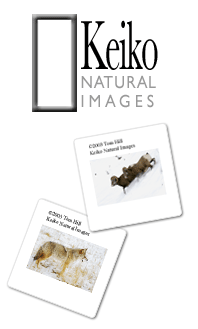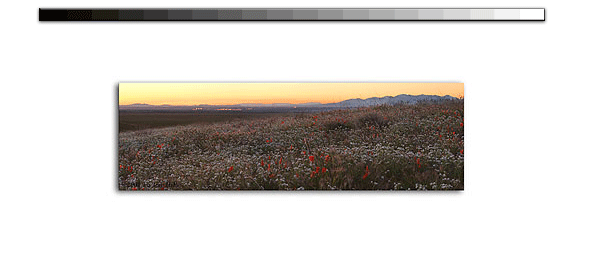|
Granite rocks, mountain cliffs, razor sharp peaks punching skyward, rarefied air, and color. What? Color? Whats that got to do with rocks and mountains? Those familiar with Ansel Adams famous landscapes and vistas showcasing the monochromatic elegance of the Sierra Nevada Mountain Range are taking a break and wondering, whats color got to do with the ultimate study of light, rock, and sky? About the third weekend in October, color has everything to do with it and youre about to see why.
While our eastern brethren are enjoying a flash of colors typical of the eastern seaboard fall season, we have our own spectacular adventure of light, rock, sky, and color. Perhaps nowhere else on the planet will you get this combination in such an exquisite mixture thats so easily accessible by you and me. Were talking an environment right there waiting to be discovered and all thats needed is you and your desire to see whats in your own backyard.
The Owens Valleyfour hours north of Los Angeles and approaching the eastern border with Nevada--in recent years is more commonly known by Southern California locals for its water rights controversies and as a path to that mega ski resortMammoth Mountainthan for its subtler virtues like elementary studies of fall hues and chiseled granite cliffs. But its there waiting to be seen. Nestled between the White and Sierra Mountain Ranges, Owens Valley is reputed to be the deepest in the United States with almost a 10,000 ft difference between the floor and nearby mountain peaks. Its also termed as a classic rift valley meaning in geological terms the valley is widening with both mountain ranges moving away from each other. Obviously, this isnt something we need to concentrate on in our terms except for noticing the evidence of geological activity thats essentially dormant now days. Its the kind of activity that bore the terrain we enjoy today.
The Eastern Sierra Mountainswest of Owens Valley--are pock marked with isolated stands of Aspens. Unlike the east coast with its continuous, undulating hills of green foliage married to a fall color bonanza, the terrain here is rocky mountainous with spots of green to break the style. The peaks here are upwards of 14,000 feet above sea level. And, thats only significant in saying its really high to most flat-landers. Normally this isnt a matter to focus on but, when youre hiking among the slopes, shortness of breath becomes a factor. Not so much due to your physical condition but more because the lack of oxygen at that altitude. Its the kind of thing that will affect everyone including the most fit. Still, most of the fall color experience can be enjoyed from the nearby comfort of a four-wheeled vehicle so you neednt be worried about embarking on some sort of Olympic training routine to partake in this adventure.
The weather is essentially dry most of the year, which yields fantastic vistas unencumbered by hazy moist air. Visibility exceeds 100 miles on good days and can cause the less experienced to underestimate ranges to distant features when stopping at those ubiquitous scenic stops. The reason is weather and all its moist air and clouds just doesnt make it over the high peaks of the Sierra Nevada from the Pacific Ocean. Fall and Winter storms that pound the west coast, loose their intensity by the time they reach the Owens Valley. Only the strongest storms have enough energy to reach the valley and only then the precipitation is a sprinkle relatively speaking. The result is western slopes of the Sierra Nevada Mountain Range enjoy vast tracks of green trees while on the other side of the peaks, here in the Owens Valley, trees have to concentrate in vales of free flowing glacial melt in order to survive. From the air this looks like green ribbons cascading down a mountains ribs with the rest of the mountains body exposed for viewing.
Out east, little of any mountain slopes are exposed for view. Foliage density is so great colors flow from horizon to horizon without a break. During the fall color bonanza its easy to forget how special the season is amongst the saturation of colored leaves. Flying out east in years past with the United States Air Force, I tried directing my training missions over especially charismatic areas like western Maine during the third week of October. They were coined as leaf checks because the beauty of the surroundings where such a magnet. I routinely varied my missions to hone flying skills with different terrain and typically directed my efforts to the most colorful areas on the east coast every Fall. These leaf checks were a collateral benefit of this expanded training. Under crystal clear autumn skies, Id travel at 500 mph, passing hundreds of square miles of pure color as far as the eye could see while hugging the terrain trying to avoid searching eyes of notional enemies bent on preventing my intentions. The aesthetic experience of such intensive training taking place among such a colorful environment was wild and entirely different than here in California.
The mountains here are the tour de force while the colored leaves provide a seasonal accent. Dont presume that since color is only an accent that the grandeur of the season is even remotely diminished. Ah contraire&the sledgehammer color experience out east is replaced with that mixture of light, rock, sky, and color that cant be duplicated anywhere else on the planet. The Eastern Sierra color seasons subtle characteristics are the attraction this time of the year; which is funny when you consider the rest of the year subtley is not the draw. Visitors usually flock to see the larger than life mountains that usually overwhelm the virtues of anything subtle in the Eastern Sierra
.I hadnt discovered any of these until someone physically pointed them out to me like a horse to water a couple years ago. I lived in Southern California for years and reveled for the weekends to play in that extraordinary outdoor playgroundMammoth Mountain. Every weekend, I traveled Historic Hwy 395 from LA to Mammoth Lakes to go skiing in the winter or mountain biking in the summer. Never once, did I notice there was more to the path than as a simple the conduit to my destinationthe journey being a necessary evil to reach the real attraction in Mammoth Lakes. As funny as it sounds, the low tone features of the Eastern Sierra Fall season are easy to overlook unless you take time to slow down and smell the roses. I only made this seasons acquaintance after a friend took me into the valleys and slowed me down enough to see what was right beneath my nose all those years.
|
|
|




